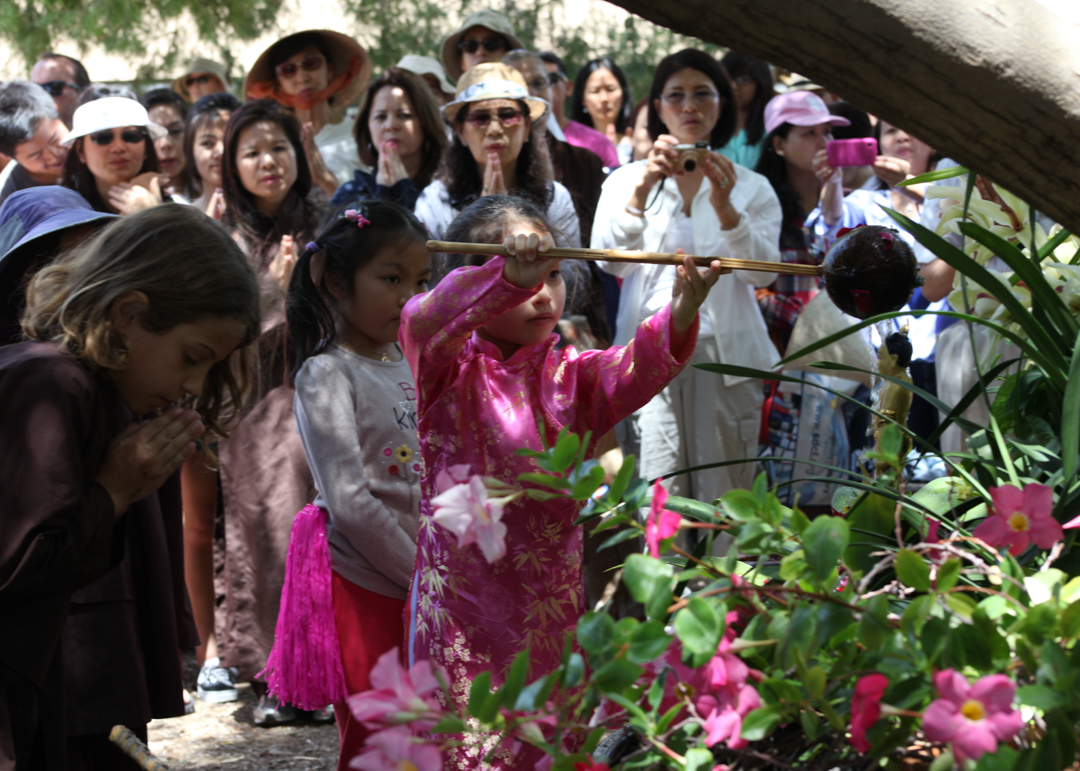By Monastics of the EIAB

For more than a decade Thay has had a dream about establishing a Buddhist Institute in Europe, a place that combines learning and practice. In Asian Buddhist institutes and in the Buddhist studies departments at Western universities, one usually finds excellent teaching but there are usually few practice opportunities. Thay’s dream is to have an institute that combines both: a Buddhist university where monks and nuns live,
By Monastics of the EIAB

For more than a decade Thay has had a dream about establishing a Buddhist Institute in Europe, a place that combines learning and practice. In Asian Buddhist institutes and in the Buddhist studies departments at Western universities, one usually finds excellent teaching but there are usually few practice opportunities. Thay’s dream is to have an institute that combines both: a Buddhist university where monks and nuns live, practice, and teach together with lay practitioners.
In 2008, when the European Institute of Applied Buddhism (EIAB) started, we monastics quickly found out that German laws made it almost impossible to create a university. Moreover, such a goal is financially beyond our reach. Thus we had to commence by realizing Thay’s dream on a more modest scale, as you can see from the following short overview of the present retreats and courses at the Institute.
MANY DHARMA DOORS: RETREATS AND COURSES
The EIAB’s most important events are the two retreats Thay gives here each year; in 2014 more than one thousand people attended the German retreat and six hundred attended the Dutch one (many couldn’t come because school had started already in the Netherlands). We conduct four family retreats: Easter, Summer, Autumn, and Christmas/New Year. All of our monastic brothers and sisters participate in these.
Our main focus, however, is on giving courses and retreats on different themes or for specific groups of people. One or two Dharma teachers facilitate these courses, which are usually attended by four to forty people. Originally we offered weeklong courses, but we shifted to weekend courses (Thursday night to Sunday afternoon) to address people’s needs. We have found that people who are new to the EIAB usually aren’t interested in Buddhist practice, nor do they want to join a Sangha afterwards; they mainly come for specific EIAB courses.
We can distinguish three types of courses offered. First, there are courses for clearly defined groups, including people in the helping professions, educators, lay Dharma teachers, people with eating disorders, businesspeople, and young people. Secondly, we offer courses with specific topics, such as: Stress and Burnout, Inner Child, Self-Compassion, Relationships, Communication, Silent Retreat, Death and Dying, Interfaith Dialogue, Qi Gong/Tai Chi, and Hiking.
We usually offer four courses per weekend. We are able to do this only because European lay Dharma teachers help out. Most of them offer one course per year at the EIAB. They do this as a way of saying thank you to Thay and the Sangha, and they don’t ask for any money from the EIAB.
The third type of course is offered by laypeople who are not Dharma teachers, but who have practiced in our tradition for some years. They don’t teach courses related to the practice or Buddhism; instead, they offer their professional knowledge in courses that combine specific skills with mindfulness. A monastic Dharma teacher is always present in these courses. Topics include Mindful Singing, Mindful Dancing, Mindful Sculpting, variouspsychological subjects, and a Family Constellations class. Lastly, we’ve even taught a course for pregnant women about giving birth mindfully, as well as a series on acupuncture for physicians.
For many people, this group of courses offers a door to come to our practice. People may be interested in a class on psychology or peace dances, and then they experience sitting and walking meditation with the Sangha. They enjoy silent meals and feel touched by the ease, kindness, and smiles of the monastic brothers and sisters. Very often they come back again to take courses with a Buddhist focus and eventually might even join a local Sangha.
Sometimes these courses are met with criticism from those who would like the EIAB to offer courses on Buddhism exclusively. However, Thay wants us to use this broad range of courses as a skillful means to help people to find a door to the practice. It is Thay’s complete trust in mindfulness that allows this kind of openness.
For further information on courses, see our website in English: eiab.eu.
SCHOOLS
The EIAB has an outreach program in the wider community, as well. We have spent much time in nearby schools and universities due to the enormous interest among local teachers and students. Usually we are invited to spend a few hours in a school to share our practice, or they come to us for a Day of Mindfulness. However, for a few years now, one school has asked us to give a weekly class over a period of several months. The teachers and students seem to love the practice of mindfulness as well as the contact with monks and nuns. Each year at the end of this series, there is a marked difference in the students’ behavior and in the overall atmosphere of this class.
PROJECTS FOR THE NEXT 1-2 YEARS
With the help of a lawyer friend and his wife, an economist, we have applied for and started to do the administrative work necessary for certification for continuing education. This requires only minor changes in some of our courses. Perhaps we should explain: in Germany, people can choose from a great variety of approved courses for their continuing education. For these courses their employer will allow five days off from work, and the government also pays a substantial part of the course fee. We hope that the extensive administrative work will be completed within a year so that we can receive certification for our courses. This probably will attract more people to the EIAB.
Monastic Dharma teachers of the EIAB lately have started to think about offering two programs of study that will allow participants to earn a certificate. One is a program for mindfulness teachers and the other is a special mindfulness and compassion program for social workers. The latter we hope to realize with a friend who teaches social workers at a German university as well as in his own institute. We still need to discuss these ideas within our group and to continually dialogue with external authorities.
Though these projects will take some time to accomplish, they will bring us a step further towards Thay’s dream of a European Institute of Applied Buddhism where teaching, studies, and practice are one.

